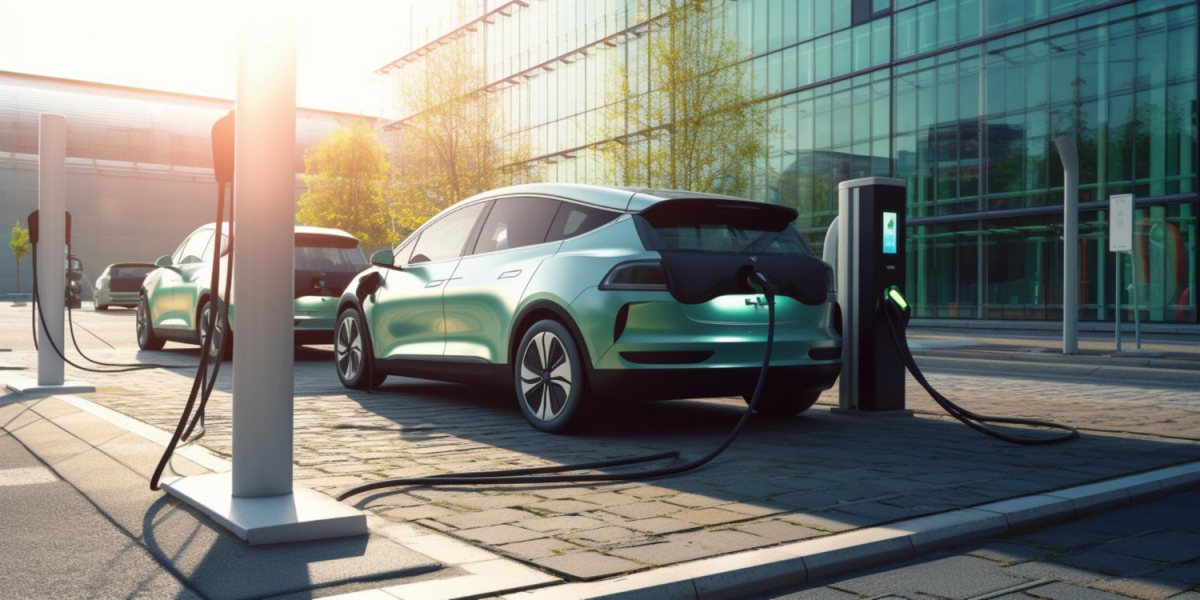The electric vehicle (EV) market is rapidly reshaping the global transportation landscape. From reducing carbon emissions to offering cost-effective alternatives to traditional fuel-powered vehicles, EVs are ushering in a new era of sustainable mobility. As the world moves toward decarbonization and sustainability, the growth of the EV market is accelerating.
This article explores the key trends, technological innovations, and predictions for the EV market in 2025 and beyond.
The Rise of the Electric Vehicle Market
Electric vehicles have come a long way since their inception. Today, they are not only seen as environmentally friendly but also as a viable solution for addressing the issues of air pollution, rising fuel costs, and dependence on fossil fuels. The shift toward EVs is being fueled by advancements in battery technology, government incentives, and changing consumer preferences.
Global EV Market Growth
According to BIS Research, the global electric vehicle market was valued at $276.9 billion in 2023 and is expected to reach $1,096.2 billion by 2033, growing at a CAGR of 14.80% during the forecast period. The market’s growth is driven by the increasing adoption of electric cars, buses, and commercial vehicles, as well as the expansion of EV charging infrastructure.
The demand for EVs is being influenced by a number of factors, including:
- Government regulations: Governments worldwide are introducing stringent emission standards and offering incentives to accelerate the adoption of EVs.
- Rising fuel prices: With the increasing cost of traditional fuels, EVs present an affordable alternative.
- Environmental concerns: The need to reduce carbon emissions and combat climate change is a major driver of EV adoption.
Key Trends in the Electric Vehicle Market
1. Battery Technology Advancements
Battery technology is at the core of the electric vehicle revolution. As EVs are entirely reliant on batteries for energy storage, the efficiency, cost, and performance of batteries significantly impact the success of electric vehicles.
- Solid-State Batteries: Solid-state batteries are expected to be the next big breakthrough in EV battery technology. Unlike traditional lithium-ion batteries, solid-state batteries use a solid electrolyte instead of a liquid one, offering higher energy density, faster charging times, and improved safety. Leading companies like Toyota and QuantumScape are actively developing solid-state batteries, with commercialization expected by 2025.
- Battery Recycling: As the number of EVs on the road increases, the need for sustainable battery disposal and recycling will grow. The development of efficient battery recycling technologies is crucial for reducing the environmental impact of battery production and disposal. Companies like Redwood Materials are working on advanced recycling methods to reclaim valuable materials from used EV batteries.
- Charging Speed and Range: Another area of focus is improving the charging speed and range of EVs. With advances in fast-charging technology and increased battery capacity, consumers can expect more convenience and longer driving ranges in the coming years. By 2025, some EV models are expected to offer a range of 500 miles on a single charge.
2. Infrastructure Expansion
The availability and accessibility of charging infrastructure is one of the key factors affecting the widespread adoption of electric vehicles. As the number of EVs on the road increases, there will be a greater need for a robust and expansive charging network.
- Public Charging Stations: Governments and private companies are investing heavily in the expansion of public charging stations. According to the International Energy Agency (IEA), the number of public charging stations is expected to increase significantly, reaching around 30 million public chargers worldwide by 2030, up from 1.3 million in 2021.
- Home Charging Solutions: The demand for home charging solutions will also rise as more consumers opt for electric vehicles. Companies are developing faster and more efficient home charging units that can fully charge an EV overnight, providing convenience and reducing the reliance on public charging infrastructure.
- Wireless Charging: An emerging technology in the EV space is wireless charging, which allows EVs to be charged without the need for physical connections. This technology is still in its early stages but has the potential to revolutionize the way EVs are charged, particularly in urban areas where space for charging stations may be limited.
Request for a custom sample research report on the Electric Vehicle Market
3. Government Regulations and Incentives
Government policies and regulations are playing a crucial role in the growth of the EV market. To meet global emission reduction targets and combat climate change, governments are introducing stricter regulations on emissions, fuel economy standards, and the adoption of electric vehicles.
- Emission Standards: Governments are implementing more stringent emission standards for vehicles, forcing automakers to transition toward EV production. In the European Union, for example, the EU is aiming for net-zero emissions by 2050, with intermediate targets such as reducing carbon emissions by 55% by 2030. Similarly, countries like China and the United States have set ambitious targets for EV adoption and are offering incentives to support the transition.
- Tax Incentives and Subsidies: To encourage the adoption of EVs, many countries offer tax incentives, subsidies, and rebates for consumers who purchase electric vehicles. For instance, the U.S. offers up to $7,500 in federal tax credits for qualifying EVs, while the European Union offers subsidies and grants for EV buyers and manufacturers.
- Zero-Emission Zones: Several cities around the world, including London, Paris, and Los Angeles, are introducing zero-emission zones (ZEZs) to restrict the use of conventional vehicles in certain urban areas. This is expected to drive the demand for electric vehicles as consumers and businesses look for alternatives to traditional fuel-powered vehicles.
4. Autonomous EVs
The rise of autonomous driving technology is poised to change the way we think about transportation. Autonomous EVs, or self-driving electric vehicles, are expected to become a significant part of the EV market by 2025 and beyond.
- Safety and Efficiency: Autonomous EVs have the potential to significantly improve road safety by reducing human error, which accounts for a large percentage of traffic accidents. Additionally, autonomous EVs can optimize driving patterns, reducing energy consumption and improving overall efficiency.
- Shared Mobility: Autonomous EVs will be central to the development of shared mobility services, such as ride-hailing and car-sharing platforms. Companies like Waymo (Google’s autonomous driving unit) and Cruise (owned by General Motors) are already testing autonomous EVs, and we can expect to see these vehicles in commercial use by 2025.
5. EVs in Commercial Transportation
While passenger EVs dominate the market today, the commercial transportation sector is also making significant strides toward electrification.
- Electric Trucks and Buses: Many companies, including Tesla, Rivian, and Volvo, are developing electric trucks and buses for long-haul transportation and public transit. Electric trucks are expected to become a major part of the logistics industry by 2025, helping to reduce emissions in freight and cargo transportation.
- Electrification of Fleets: Companies operating large fleets of delivery vans, buses, and trucks are increasingly turning to electric vehicles to reduce their carbon footprint and operating costs. The electrification of commercial fleets is expected to reduce fuel costs, lower maintenance expenses, and improve sustainability.
Predictions for the EV Market by 2025 and Beyond
As we look toward 2025 and beyond, several key developments are expected to shape the future of the EV market:
- 50% of Global Car Sales Will Be Electric: According to various industry reports, electric vehicles are expected to account for 50% of global car sales by 2030, with several countries setting ambitious EV adoption targets. This shift will be driven by technological advancements, cost reductions, and government policies.
- Battery Prices Will Drop by 50%: As battery production scales up and new technologies such as solid-state batteries are commercialized, the cost of EV batteries is expected to decrease by upto 50% by 2025. This will make EVs more affordable and accessible to a wider range of consumers.
- Increased EV Adoption in Emerging Markets: While EV adoption has been high in developed countries, the growth of the market in emerging economies such as India, Brazil, and Southeast Asia is expected to accelerate. Factors such as rising income levels, government incentives, and the expansion of charging infrastructure will drive EV adoption in these regions.
- Widespread Deployment of EV Charging Networks: By 2025, the global network of EV charging stations is expected to expand dramatically, making it easier for consumers to charge their EVs at home, work, or public locations. The proliferation of fast-charging stations will reduce range anxiety and improve the convenience of owning an EV.
Get more insights on the automotive market research reports.
Conclusion
The electric vehicle market is transforming the transportation industry, offering a sustainable and innovative solution to the challenges of climate change, air pollution, and energy consumption. With advancements in battery technology, expanding charging infrastructure, and government support, EVs are set to become the dominant form of transportation by 2025 and beyond.
As the market grows, new trends such as autonomous driving, electrification of commercial fleets, and integration with smart cities will continue to shape the future of mobility. The future of transportation is electric, and the shift is happening faster than ever before.









